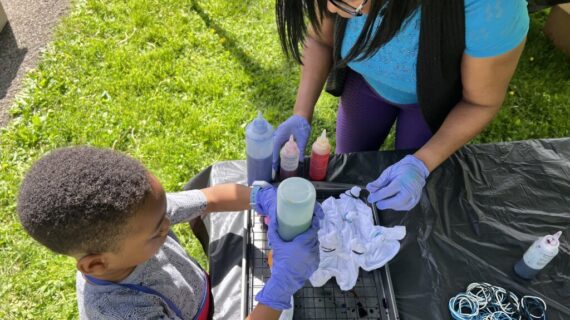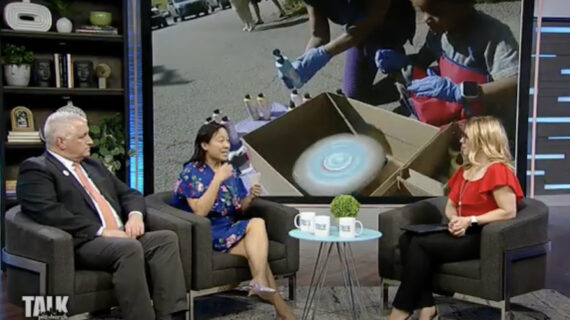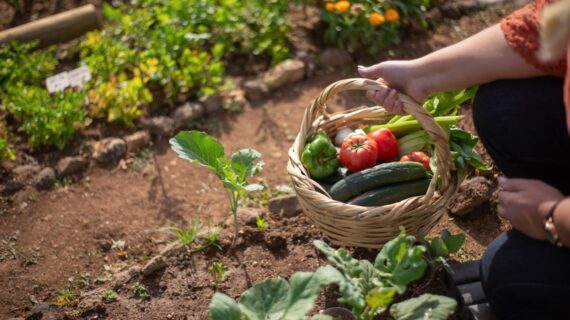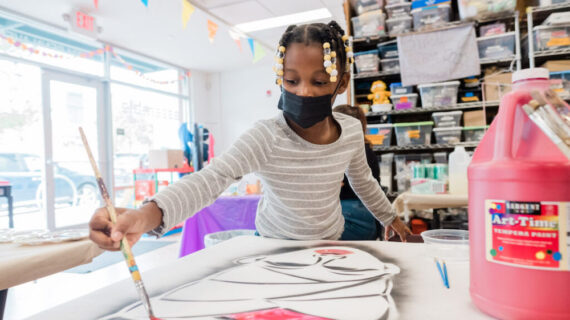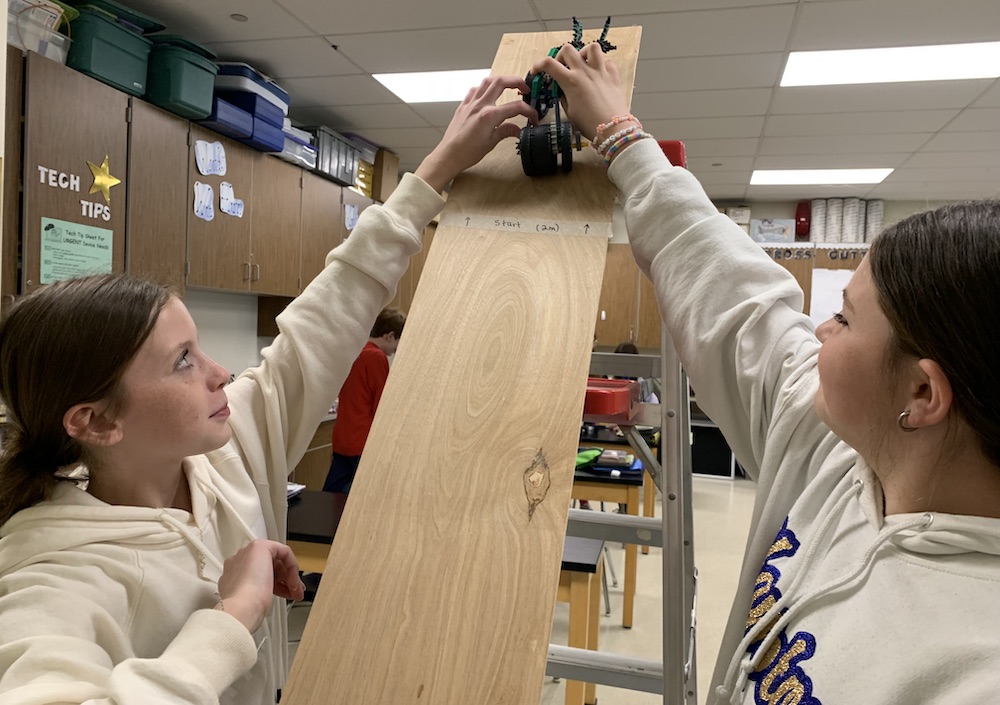
New science standards are coming to Pennsylvania schools
Photo above courtesy of KDKA.
If you’ve had kids in elementary school recently, you know math is taught differently than it was when most of us were kids. Now, Pennsylvania is changing the science standards for teaching.
Teacher Michele Hurst is already implementing the new standards in her sixth grade science class at Hampton Middle School in the Hampton School District. The students are testing eggs enclosed in kid-made cars flying down a steep slope. (Thankfully, the eggs are plastic for the practice runs.)
This is the new way of teaching science – more experiments, trial and error, discussion, problem-solving, and collaboration with other students. Students in Ms. Hurst’s class all seem to like this new way of teaching.
“I like it because it’s a more hands-on approach,” says student Oliver Clark. “You’re doing more stuff with your hands, and you’re learning it in a different way which is better.”
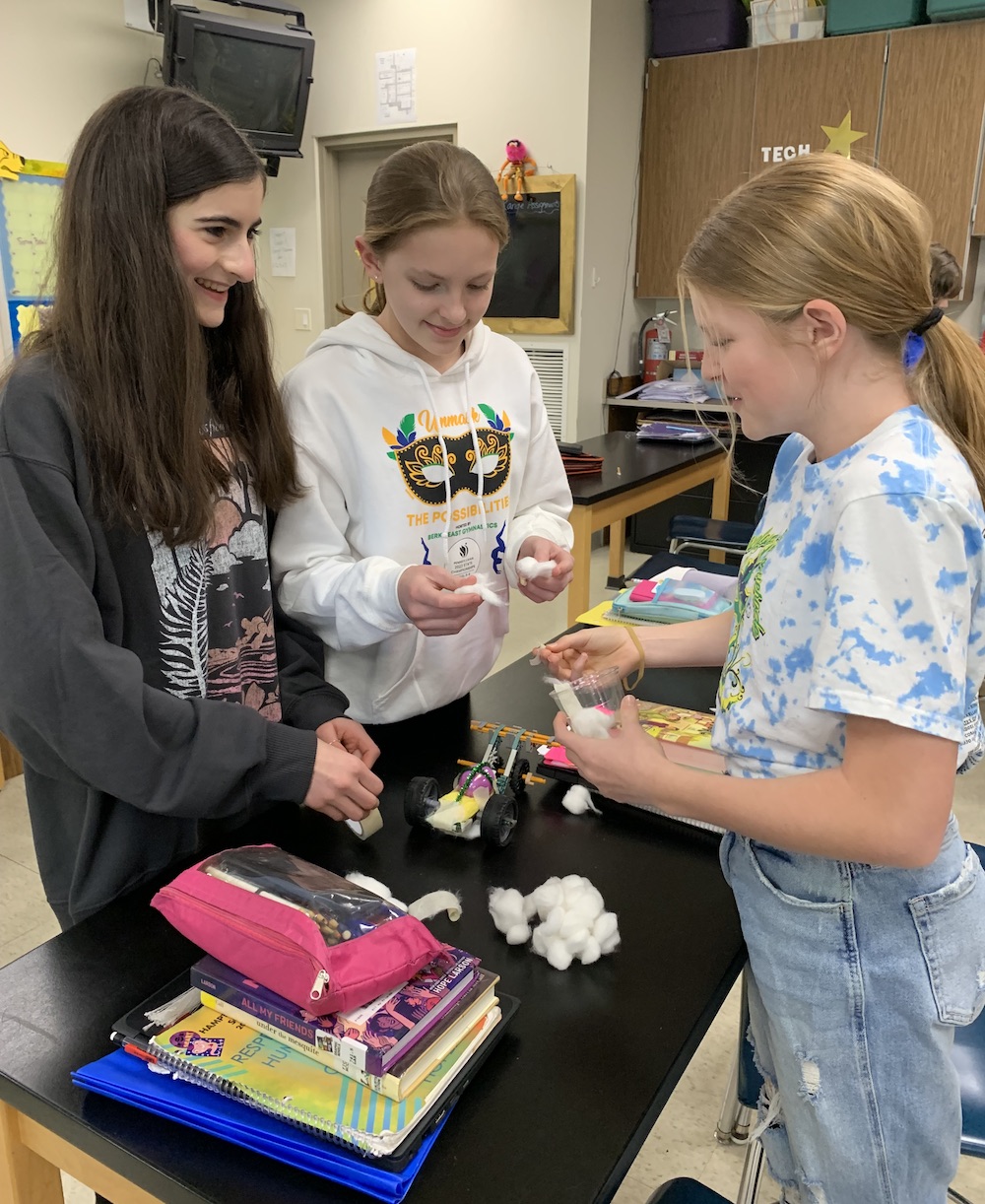
Student Nora Maura agrees: “I think it’s a better way to do it because you get to experiment more when you do it, and you get to test it out with different materials.”
The Allegheny Intermediate Unit is training teachers from all over Allegheny County over several years and wants the teachers to gradually introduce the new science standards in the classroom so it’s fully integrated by the 2025 – 2026 school year.
“A lot of kids come to school with a natural curiosity, and then that kind of wanes over time,” says Dr. Corinne Marko Murawski, the AIU’s Math and Science Coordinator who leads the teacher training. “We’re hoping that these shifts are going to sustain that engagement and interest in science, technology, engineering and environmental literacy as we move forward.”
Murawski says the new standards involve using more natural phenomena that happen in the real world, and the students come up with their own ideas instead of just memorizing facts.
Plum High School Biology Teacher Paxton Fetterman, who’s in the AIU training, said with the new way of teaching, students are “acting as the scientists. They’re investigating or problem-solving, and that’s a really important skill we want them to carry on and have curiosity about in their time after school.”
Student Reese Goldstein is enjoying that: “You get to think through it more than just writing down stuff and problem solving.”
Equity is another tenet of the new science standards — encouraging all students to be part of the discussion.
“It’s a very daunting thing to share ideas, to have to listen to people that don’t really have the same thoughts as us,” Fetterman said. “So I think parents can really just help support that culture that everyone is learning to be respectful.”
Dr. Murawski said it’s about welcoming more voices: “We feel like the more diversity and the more different voices that are at the table, the better we’ll be at trying to uncover and discover new science.”
The hope is the new science standards will get students so excited about science, they will want to pursue it as a career or lifelong passion and then pass that along to their own kids.
“I actually get to do the process,” said another Hampton student, “and think about it in a different way than just sitting and listening.”
Pennsylvania’s science standards have not been updated in 20 years, and Dr. Murawski says most states around the country have already shifted to this model of teaching. The new standards went through a rigorous process for approval from parents, community groups, science professionals and educators.
